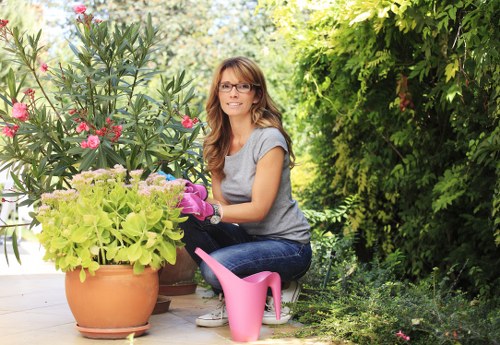Lawn Turf Installation Hook: Transform Your Outdoor Space

Installing lawn turf in Hook can completely transform your outdoor space, providing a lush and green area for relaxation, play, and entertainment. Whether you’re starting from scratch or replacing an existing lawn, understanding the right steps and best practices is crucial for a successful installation.
Hook, a charming area known for its vibrant communities, offers ideal conditions for turf installation. The local climate and soil types make it perfect for various types of grass, ensuring that your lawn remains healthy and beautiful year-round.
In this comprehensive guide, we’ll walk you through everything you need to know about lawn turf installation in Hook, from planning and preparation to the actual installation process and maintenance tips.
Planning Your Lawn Turf Installation

Proper planning is the foundation of a successful turf installation. Start by assessing your outdoor space to determine the best type of turf for your needs.
Consider factors such as sunlight exposure, soil quality, and intended use of the lawn. Different grasses thrive in different conditions, so selecting the right type is essential.
Additionally, creating a detailed plan will help you organize the installation process, ensuring that you don’t overlook any critical steps.
- Determine the purpose of your lawn: play area, aesthetic appeal, etc.
- Measure the area accurately to calculate the amount of turf needed.
- Choose the right type of turf for your local climate and soil conditions.
Choosing the Right Turf Type

There are several types of turf available, each with its unique characteristics. Common varieties include perennial ryegrass, Kentucky bluegrass, and fescue. Understanding the pros and cons of each type will help you make an informed decision.
Perennial ryegrass is known for its quick establishment and vibrant green color, making it a popular choice for residential lawns. Kentucky bluegrass offers excellent durability and a fine texture, ideal for high-traffic areas.
Fescue, on the other hand, is highly adaptable to various soil types and is drought-resistant, reducing the need for frequent watering.
- Perennial Ryegrass: Quick to establish, vibrant color.
- Kentucky Bluegrass: Durable, fine texture.
- Fescue: Drought-resistant, adaptable.
Preparing the Ground for Installation

Proper ground preparation is vital for the longevity and health of your new lawn. Begin by clearing the area of any existing vegetation, rocks, and debris.
Once cleared, grade the soil to ensure proper drainage. Poor drainage can lead to waterlogged areas, which can stunt grass growth and promote the development of weeds.
After grading, it’s essential to loosen the soil to a depth of at least 6 inches. This enhances root penetration and allows air and nutrients to reach the grass roots effectively.
Soil Testing and Amendments

Conducting a soil test helps determine the nutrient levels and pH balance of your soil. Based on the results, you can amend the soil with necessary fertilizers or lime to create an optimal growing environment.
Adding organic matter, such as compost, improves soil structure, water retention, and nutrient availability. It also promotes healthy microbial activity, which is beneficial for grass growth.
Ensuring your soil is well-amended sets the stage for a thriving lawn that can withstand the local climate and usage conditions.
- Test soil pH and nutrient levels.
- Amend soil based on test results.
- Add organic matter to improve soil quality.
Installation Process
With thorough planning and ground preparation complete, it’s time to install your lawn turf. Follow these steps to ensure a flawless installation:
- Layout: Start by laying out the turf rolls evenly, ensuring that the edges are tightly fitted without overlapping.
- Seam Sealing: Use a sharp knife to trim and fit the edges precisely. Seam sealing helps prevent gaps where weeds can take root.
- Rolling: After laying the turf, use a roller to press it firmly into the soil. This eliminates air pockets and ensures good contact between the turf and the ground.
- Watering: Immediately water the newly installed turf thoroughly to help it settle and establish roots.

Post-Installation Care
Proper care after installation is critical for the establishment of your lawn. Initially, keep the turf moist by watering regularly, but avoid overwatering, which can lead to fungus growth.
Gradually reduce the frequency of watering as the grass begins to establish roots. Additionally, avoid heavy foot traffic on the new lawn until it is fully rooted.
Regular mowing should begin once the grass reaches about 3 inches in height. Ensure your mower blades are sharp to prevent tearing the grass.
Maintenance Tips for a Healthy Lawn
Maintaining a healthy lawn involves regular care and attention. Here are some essential maintenance tips:
- Watering: Water deeply but infrequently to encourage deep root growth.
- Mowing: Keep your grass at the recommended height for its type.
- Fertilizing: Apply fertilizer as needed based on soil test results to provide necessary nutrients.
- Weed Control: Regularly remove weeds to prevent them from competing with your grass.

Seasonal Care
Different seasons require different care strategies. In spring, focus on removing debris and aerating the soil. Summer requires consistent watering and monitoring for drought stress.
In autumn, prepare your lawn for winter by applying a final fertilizer and conducting a thorough cleanup. During winter, minimize foot traffic and protect your lawn from harsh conditions.
Adapting your maintenance routine to seasonal changes ensures that your lawn remains resilient and vibrant throughout the year.
Local Areas for Lawn Turf Installation
If you’re in Hook, you’re in luck—the surrounding areas also offer excellent conditions for lawn turf installation. Here are some nearby areas where you can enhance your outdoor spaces:
- Kingston Just a short drive from Hook, Kingston boasts fertile soil perfect for a variety of turf types.
- Richmond Hill: Known for its lush greenery, Richmond Hill is ideal for installing drought-resistant grasses.
- East Molesey: With ample sunlight, East Molesey is perfect for sun-loving turf varieties.
- Chessington Chessington’s community gardens are a testament to successful turf installations.
- New Malden New Malden’s temperate climate supports year-round lawn growth.
- Horsell: Horsell offers spacious areas suitable for large lawn installations.
- Sunbury-on-Thames: Sunbury’s well-drained soils make it ideal for various turf types.
- Claygate: Claygate’s greenery provides a picturesque setting for new lawns.
- Camberley: Camberley’s community parks showcase beautiful turf installations.
- Woking: Woking’s mixed soil types allow for diverse turf planting options.
- Guildford: Guildford’s gardens are a prime example of successful lawn installations.
- Leatherhead: Leatherhead’s climate is conducive to a wide range of grass species.
- Farnham: Farnham offers both sun and shade areas suitable for different turf types.
- Marlow: Marlow’s scenic landscapes benefit from well-maintained lawns.
- Barnham: Barnham’s community spaces are perfect for lush, green lawns.
Frequently Asked Questions

1. How long does it take for new turf to establish?
Typically, new turf begins to establish within two weeks, but it can take up to a couple of months to fully root and become resilient.
2. Can I install turf in partial sunlight areas?
Yes, there are specific grass types that thrive in partial shade. It’s essential to choose a turf variety suited for lower light conditions.
3. How often should I water my new lawn?
Initially, water your new turf daily for the first couple of weeks. Once established, reduce watering to 2-3 times per week, depending on weather conditions.
4. What are the common mistakes to avoid during turf installation?
Common mistakes include poor ground preparation, incorrect turf selection, inadequate watering, and not sealing the seams properly. Avoiding these can lead to a healthier lawn.
5. Is it necessary to fertilize the turf after installation?
Yes, fertilizing provides essential nutrients that support grass growth and health. Conduct a soil test to determine the specific fertilizer needs of your lawn.